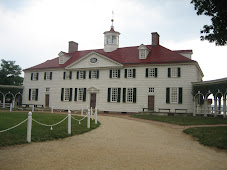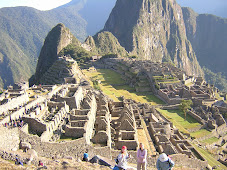 The article titled “Digital Technology and the End of Social Studies Education” was the trigger of our discussion in Salon #4 with Brenda. Author Bill Tally raised thoughtful criticisms of the realities of education, revealed undeniable descriptions of technology integration into classrooms, put forth challenging questions for readers to consider, but most importantly he deposited hope and faith that “technologies do have a role in making social studies teaching and learning more lively, more rigorous, and more grounded in problems that matter to students and their communities”.
The article titled “Digital Technology and the End of Social Studies Education” was the trigger of our discussion in Salon #4 with Brenda. Author Bill Tally raised thoughtful criticisms of the realities of education, revealed undeniable descriptions of technology integration into classrooms, put forth challenging questions for readers to consider, but most importantly he deposited hope and faith that “technologies do have a role in making social studies teaching and learning more lively, more rigorous, and more grounded in problems that matter to students and their communities”.At first, I was convicted by Tally’s description of teachers today who uses technology to do exactly what they’ve done for years – for example, showing a video clip from the Internet rather than putting on a VHS or using the SmartBoard to give notes just as if it was a blackboard with the same set of notes in chalk. Throughout the article and discussed during the salon, I was inspired to go beyond the superficial use of technology in the classroom but be reminded of the “why” and “to what end” rather than being obsessed with the “how”. I questioned myself about the reason why I’m teaching students American History and I came up with a few good answers. First of all, I want to cultivate patriotic and responsible citizens for the sake of the future – so gaining an appreciation of the nation’s foundation is a good way to start. Secondly, I want to promote understanding of themes in society – the cause and effect, the triumphs and failures, the rights and responsibilities, the chronology of struggles, long term and short. Lastly, I want to inspire future historians and makers of the next chapters of history.
Doesn’t that sound great? I think so! Yet, I’m sad to report that the reality of my classroom is far from these ideals.
Unlike the ideas celebrated in Tally’s article, I cannot “slow down” or “dig deeper” in my teaching – on the contrary, I need to constantly rush through the curriculum as fast as I can before June to prepare my students with basic facts and ready for 8th grade Social Studies teachers to pick up exactly where we left off on the timeline and inject more knowledge to fill in as many blanks as possible to get them all ready for the New York State assessment exam at the end of the year, which includes both 7th and 8th grade material. So how do I reconcile what I want to achieve as an educator and what I am able to do in the classroom? Is “deeper learning” better at such a young age? Tally criticized many poor assignments given in which recipe rubrics and points given for following specific requirements. I am guilty of giving such rubrics and I also agree that micromanaging student “creative” projects will get me closer to my goals as a teacher. Yet, in order to be “fair” in order to make grading 120 projects manageable and save myself from biased judgment of “creativity”, I am forced to issue such rubrics.
In the article, Tally also addresses common WebQuests that serves as a web-based scavenger hunt for students to gather information and fill in a worksheet. Unfortunately, I too am guilty of this poor design. So I looked at the Museum Box project and was immediately floored – meaning, I was fascinated by the brilliancy of this activity. The project does not want students to spit back information on a worksheet or answer questions about a document – rather asks them to gather, digest and present information for others to access. What is your message and how can you explain all of it on a six-sided cube. According to Tally’s list of “human capacities to observe, understand and communicate about the world”, the museum box encourage students to take ownership of their design and give them means to be creative by allowing them to select their mediums (e.g. document, video, images, etc.) of presenting information. Students will likely come across more information that can be included on each cube so the project also foster students’ ability to dissect and digest the information – to understand it fully and eliminate unnecessary aspects when creating the final presentation. I think the Museum Box definitely require students to utilize analysis and synthesis skills according to Bloom’s Taxonomy. I guess my only question would be, if this was an assignment given to students, how do I grade it? Is it back to the detailed rubric? If so, how many points do I give for “creativity”? The ultimate question in my mind is how to measure true creativity in Social Studies education?






No comments:
Post a Comment